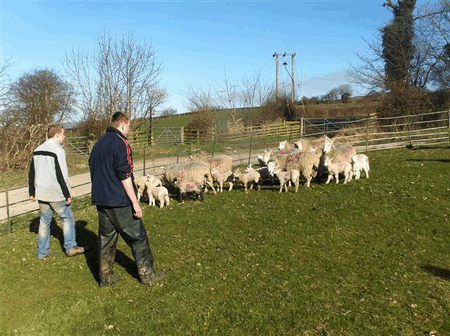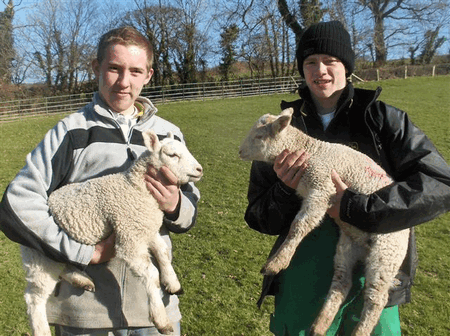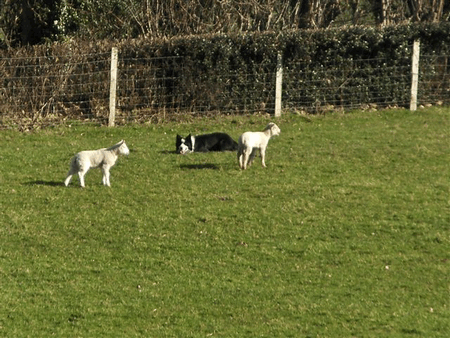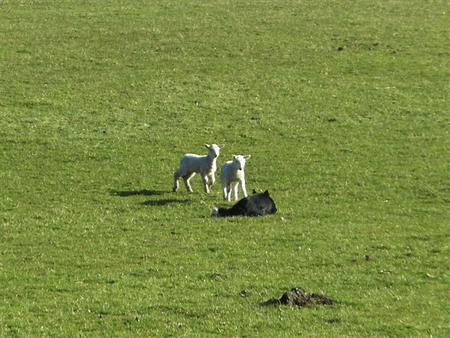College Farm Focus: Llysfasi

The spring like weather in early February this year has helped enormously with the start of our lambing season.
In order to make the best use of the lambing facilities and staff availability, we lamb for a period of 4 months in the year (mid January to mid May).
This also gives a range of months when we sell lambs, in fact there are by now relatively few months of the year when we aren’t selling lambs.

The older Welsh Half bred and Mule ewes lamb first, having been sponged the previous August and whilst they won’t be ready for the early Easter lamb trade, they do produce lambs for sale quite early on.
Students are fully involved with the lambing process and collectively take charge of the night time lambing duties with the early lambing flock of up to 300 ewes.
If the weather is decent, as it has been so far this year, the couples are turned out within a week in order to keep indoor disease build up to a minimum.
If the weather is poor, we have no option but to extend the housing for these early born lambs.
Lime is used to help control the environment and all lambs are navel dipped and administered a tablet at birth to combat any disease pick up.

Also, suckling of colostrum early on is deemed an essential aid to lamb survival.
As all the ewes are scanned, any empty ewes are identified and therefore do not take up valuable housing space, labour and straw etc.
We also identify and mark late lambing ewes, as over the years, we have moved to a system where groups of ewes are housed as close to their lambing date as possible.
This again helps control housing costs and allows us to concentrate on smaller numbers at any one time.
The downside is that the pasture only gets a short break between housing groups of ewes and their return to pasture.

The ewes are fed a complete diet based on grass silage and a home mix of whole wheat, soya, rape meal, sugar beet and minerals fed via a feed mixer wagon.
As they are housed close to lambing, pure glucose is available for the ewes from buckets for the first few days as they get used to their new diet.
This may appear to be an expensive option but on the back of it we get very few ewes with twin lamb disease and the associated welfare, time and financial losses that incurs.
We have also found that with this system, we seem to get very few prolapsed ewes.
Main lambing takes place from early March with the main Welsh Mule flock lambing indoors first followed by the Welsh Mountain ewes.
If the weather is good, we prefer to lamb the hill ewes outdoors, as we did in 2007, but a cold, wet April leads to the housing option being more beneficial.

In terms of lambing percentages, we look for 140-160% as a target for the hill ewes and 170% plus for the Half bred and Mule ewes.
Our results vary with the year and we have over the years both exceeded, been on and below the targets.
The key for us is not just the overall lambing percentage but also the make up of that crop as we wish to avoid too many empties and triplets.
Beef prices have strengthened with the turn of the year and this has been welcome. We have avoided the temptation of reducing either the intensity or the length of the finishing period on the back of higher grain prices as we are not prepared to send poorer cattle onto the market.
It must be remembered that better feeding leading to a positive change in conformation grade or a better level of finish will normally yield a better price per kilo that applies across the entire weight of the animal.
Even though the finishing period is itself inefficient when considering the cost per kilo of gain, if a better finished is achieved in this period, the price benefit comes in its wake.
This sounds simple but meeting what the market needs when input costs are going up exponentially will challenge us all.
Finally, in late January and early February we held two very successful taster courses for learners interested in following a career in the countryside.
The enthusiasm of these youngsters and their desire to live and work in the countryside was great to see.
We in turn have a strong will and determination to see them succeed educationally, we can but hope that there is the political will to support them and to recognise their value as the food producers and countryside managers of the future.
